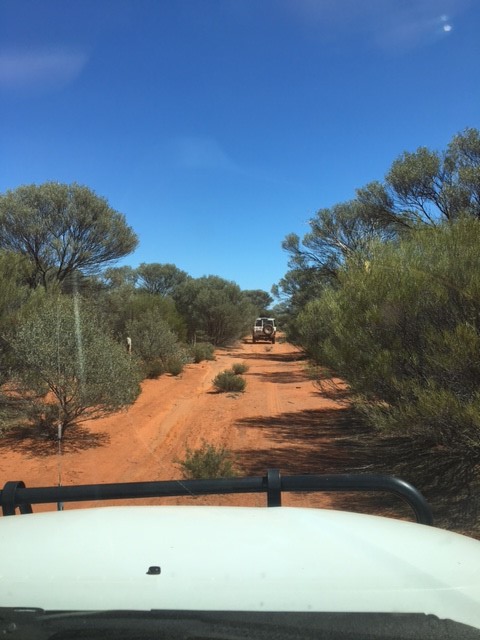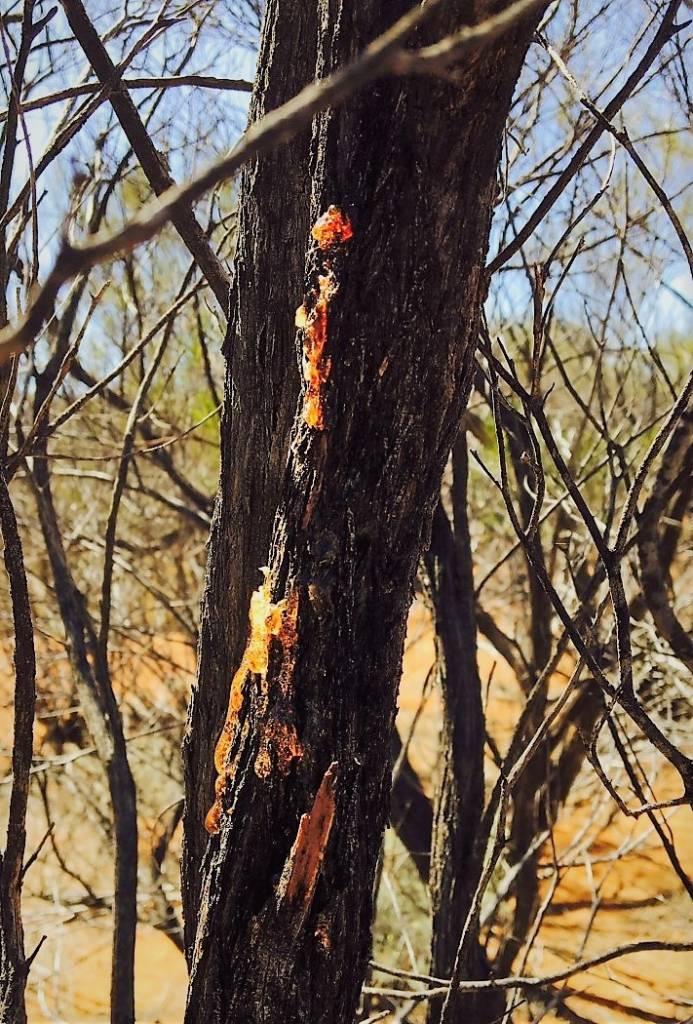Overview
Last week I spent 5 days in the Goldfields facilitating an Aboriginal heritage survey. Over the 5 days we travelled approximately 900kms on dirt tracks and access tracks, at times we were travelling at speeds of 10 – 15kms per hour, due to the rough terrain of the tracks. The team consisted of an anthropologist, 5 traditional owners/knowledge holders and myself. The purpose of the survey was to identify areas of cultural significance that were to be avoided prior to ground disturbance activities.
Day 1: The field trip was kicked off with a meeting, introductions were made and an outline of the scope of works, safety concerns, and the all-important UHF radio channel that we’d use throughout the survey were discussed (in case you’re wondering, we decided on channel 10). The number one rule was to stay in convoy, keep the vehicle in front or behind you in your line of sight and keep in radio contact at all times. Armed with maps, GPS, 3 x 4WD’s and men that know country well, we set off.

The day went well, the survey area wasn’t too large and we managed to cover it all, with no areas of cultural significance identified.
Day 2 & 3: Both days were captivating due to the fact that we were surveying an area of cultural interest- the area is part of the Malleefowl dreaming story (Tjukkurpa), in which two hills are located. The hills represent the bird’s nest. There was also a third hill linked to this story, although this hill was outside of the survey area.
The area surveyed over these days was quite extensive and a little challenging. We were travelling quite slowly as some of the access tracks were washed out due to the recent rains.
Day 4 & 5: Over the last two days we were able to complete the remaining survey area. Day 4, we came across some bush tucker (see inserted picture), it’s sap from a sweet gum called Ngudurri, it tasted delicious! Sweet, but not too sweet, a bit like honey, but not, it had a slightly familiar taste, which unfortunately I can’t quite bring to mind what that is, it’ll remain a mystery for now. It was very moreish, in fact we were like kids in a candy shop, trying to be the first in line to get to the next tree.

No other sites of cultural significance were identified.
Overall the 5 days went extremely well. No incidents or accidents to report. We kept to the plan, drove to conditions, stayed in convoy, kept in constant radio communication, and alerted each other if there were any unforeseen hazards ahead. Each morning we had a debrief about the day’s activities, what tracks were to be used, which area was to be surveyed and if there was any prior knowledge of any significant cultural areas.
Learnings and Knowledge Sharing
To summarise the trip I would say it was enlightening. I’m writing this on Harmony Day which brings me to reflect maybe a little more than I usually do. Harmony Day’s mission statement is ‘’Celebrating Cultural Diversity’’ I believe that this was achieved throughout the survey. The team shared stories of family, culture, and our individual history, we shared food, we laughed, we yarned and most importantly we respected each other’s varying beliefs.
One of the most personally rewarding aspects of being out on country is that it never ceases to amaze me how old Aboriginal Culture is. To think that I am able to sit where the first Australians walked this land over 40,000 years ago, yarning and hearing stories of their past, is truly extraordinary.
From my perspective, the keys to facilitating a successful heritage survey are communication, consultation and transparency.
If you need assistance with Aboriginal heritage surveys, engagement strategies and planning don’t hesitate to contact us at Integrate Sustainability, we can work with you to tailor an approach to assist you in achieving positive and sustainable outcomes.
